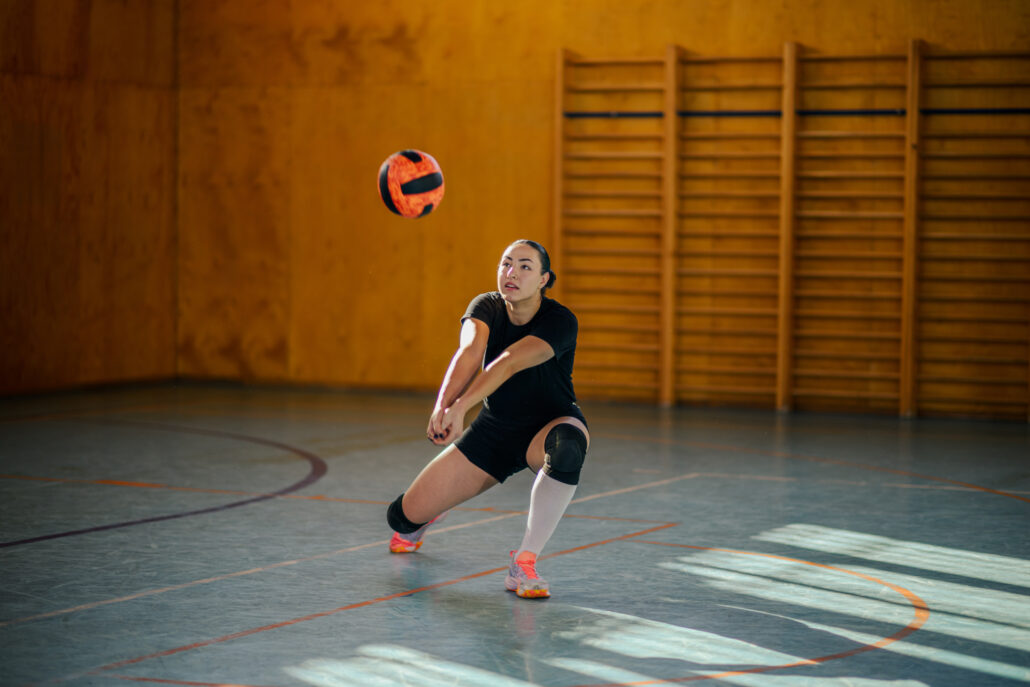Most Common Overhead Injuries for Volleyball Players
Volleyball players depend on their shoulders, using the joints’ exceptional mobility and rotation to execute powerful serves, overhead sets, and fast spikes with pinpoint accuracy. But all of this overhead motion can increase a player’s risk of shoulder injury.
“The explosive nature of striking a volleyball and the repetitive nature of the sport are the main reasons for shoulder injuries in volleyball. Attackers and jump servers are more prone to shoulder issues, and the shoulder region generally accounts for up to 25% of all volleyball injuries,” said Summit sports medicine and shoulder surgery expert Michael Freehill, M.D.
About the shoulder
The shoulder is called a ball-and-socket joint, composed of the humeral head (ball) and the glenoid (socket). The acromion (top of the shoulder blade) and clavicle (collar bone) make up the other portion of the shoulder. Because of the shoulder’s anatomy, a person’s arm can rotate in almost any direction. This wide range of motion, however, comes at a cost: the shoulder is generally less stable than most other joints in the body.
Overhead injuries for volleyball players — traumatic injuries
Volleyball players tend to get two kinds of shoulder injuries that can be related to overhead motion, and the first of these is a traumatic injury caused by a fall, a blow, or other sudden motion. Examples of traumatic shoulder injuries common in volleyball players include:
- Rotator cuff tears
- Shoulder dislocation
- Shoulder separation
Overhead injuries for volleyball players — wear-and-tear injuries
The second broad category of common shoulder injuries among volleyball players is overuse injury, brought on over time by repeatedly reaching overhead and swinging the arm around, often with a lot of force. These kinds of wear-and-tear injuries, which are generally much more common than traumatic injuries, include:
- Bursitis
- Rotator cuff tendinitis
- Labral tears
- Biceps tendinitis
- Scapular dyskinesis (also called SICK scapula syndrome)
- Suprascapular nerve injury
How to treat and prevent overhead volleyball injuries
“The best treatment for shoulder injuries begins with prevention. This includes consistent strengthening of the rotator cuff, and the scapular or shoulder blade stabilizing muscles, while maintaining a full arc of rotation in the shoulder,” Dr. Freehill said. “Attention to core strengthening should be a vital part of training as well. With all overhead sports, maintaining appropriate mechanics is incredibly important as well.”
When you’re injured, it’s smart to consult with a sports medicine specialist, who will be able to assess the injury and work with you to determine the right next step. In some cases, rest, activity modification, anti-inflammatory medicines, and physical therapy can really help address symptoms. In other cases, nonsurgical treatments, including injections to promote healing and control pain, may be recommended. If nonsurgical treatments fail, or if the injury is severe, surgery may be the way to go. As a first step, it’s important to get a correct diagnosis, which will lay the groundwork going forward.
To prevent injuries, make sure to engage in a dynamic warm-up before playing volleyball. Doing light versions of the shoulder motions you’ll need to use can help warm up muscles and lubricate the joint itself.
Learn more about shoulder-related conditions and treatments.
